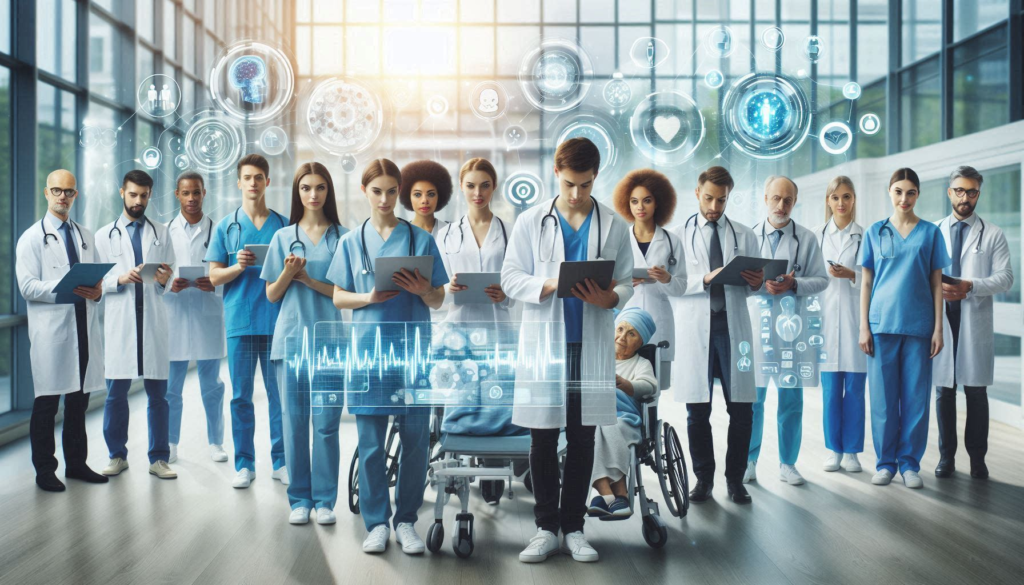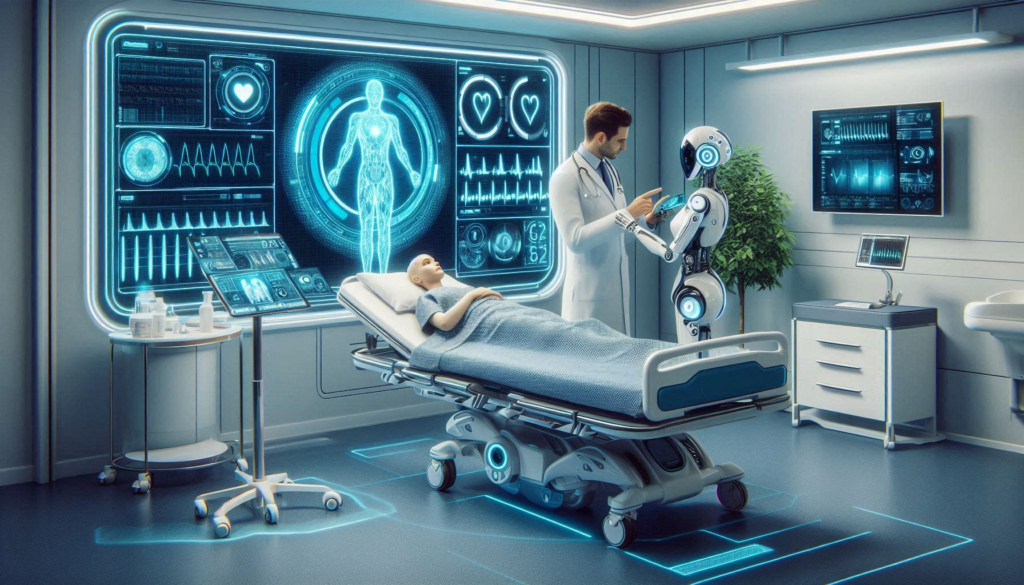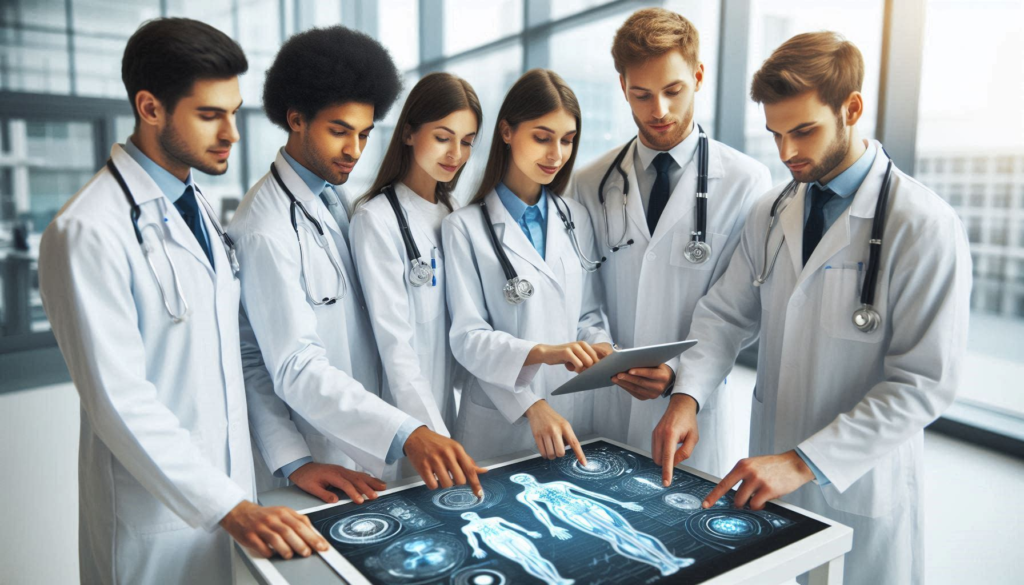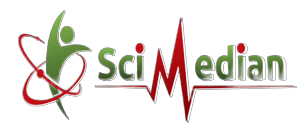Hello, dear readers! Once again, welcome to the SciMedian blog. This is the fourth and final blog for the Top 5 Examples of AI in Healthcare series.
In today’s rapidly evolving healthcare landscape, the integration of Artificial Intelligence (AI) is revolutionizing the way we diagnose, treat, and manage diseases. From medical imaging and diagnostics to Electronic Health Records (EHR) management, AI is enhancing efficiency and accuracy across the board. This blog post delves into the transformative impact of AI in healthcare, exploring its applications in predictive maintenance, AI in genomics, and telemedicine. Join us as we uncover how these cutting-edge technologies are shaping the future of healthcare.
Here I mentioned the Top 5 examples of AI in healthcare please read now.
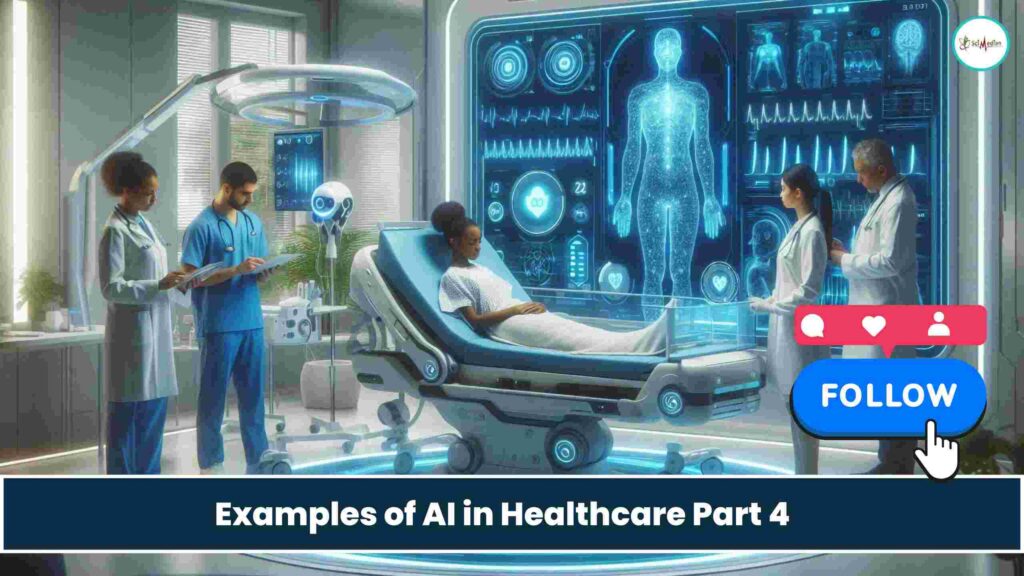
1. Medical imaging and diagnostics
Medical Imaging and Diagnostics play crucial roles in modern healthcare, allowing clinicians to visualize internal structures, detect diseases, and guide treatment decisions. Here are some common types of medical imaging and their applications:
- X-rays:
- X-rays are widely used for skeletal imaging (e.g., fractures, and joint abnormalities).
- Detect lung conditions (such as pneumonia or lung cancer).
- Dental X-rays reveal dental caries and assess tooth alignment.
- Computed Tomography (CT):
- Provides detailed cross-sectional images of organs and tissues.
- Used for detecting tumors, assessing vascular diseases, and evaluating trauma.
- Magnetic Resonance Imaging (MRI):
- Utilizes strong magnetic fields and radio waves to visualize soft tissues (e.g., brain, spinal cord, muscles).
- Diagnoses neurological disorders, joint injuries, and tumors.
- Ultrasound:
- Non-invasive and safe for imaging during pregnancy.
- Assesses fetal development, abdominal organs, and blood flow.
- Nuclear Medicine Imaging (including Positron Emission Tomography, PET):
- Involves injecting radioactive tracers to visualize metabolic processes.
- Identifies cancer, evaluates heart function, and detects bone abnormalities.
2. Electronic Health Records (EHR) Management
Is a critical aspect of modern healthcare, streamlining patient data storage, accessibility, and coordination. Here are some key points and examples related to EHR management:
- What is an EHR?:
- An EHR is a digital version of a patient’s medical record, securely storing and organizing crucial health information.
- Examples of data found in EHRs include:
- Patient Demographics: Name, address, date of birth, gender, insurance details, and emergency contacts.
- Medical History: Past illnesses, surgeries, immunizations, and family medical background.
- Medications: Current and past drug information, dosages, and allergies.
- Lab Results: Blood work, X-rays, imaging scans, and specialized tests.
- Vital Signs: Blood pressure, temperature, heart rate, respiratory rate, and more.
- Benefits of EHRs:
- Efficient Data Access: Authorized healthcare providers can view and share patient data seamlessly.
- Automation: EHRs automate processes, reducing administrative burden.
- Improved Patient Care: EHRs enhance care coordination, leading to better health outcomes.
- Examples of EHR Systems:
- Epic: Comprehensive solution widely used in large healthcare organizations.
- Cerner: Known for customization options to fit specific workflows.
- CareCloud: User-friendly platform for ease of use.
- Athenahealth: Cloud-based solution with telehealth capabilities.
- eClinicalWorks: Popular for ambulatory services and practice management.
- Allscripts: Offers flexibility and connectivity.
- NextGen Healthcare: Integrates financial management solutions.
3. Predictive maintenance
Is a valuable approach in healthcare, ensuring that medical equipment remains reliable and operational. By analyzing data and patterns, predictive maintenance helps identify potential issues before they cause disruptions. Here are some real-world examples of predictive maintenance in medical equipment:
- Cardiac Monitors:
- The Cleveland Clinic implemented predictive maintenance techniques for cardiac monitors. By analyzing data from these monitors, they predicted battery failures before they occurred, ensuring uninterrupted patient monitoring.
- Anesthesia Machines:
- Beth Israel Deaconess Medical Center uses IoT sensors to monitor anesthesia machines. Predictive maintenance helps detect anomalies and schedule timely maintenance, preventing unexpected breakdowns during critical procedures.
- MRI Machines:
- MRI scanners are essential for diagnosing various conditions. Predictive maintenance analyzes sensor data (temperature, pressure, electromagnetic fields) to identify potential issues. Scheduled maintenance during low-demand periods ensures continuous availability.
- X-ray Systems:
- Predictive maintenance monitors X-ray machines for signs of degradation or malfunction. Early detection allows proactive interventions, minimizing downtime and ensuring accurate diagnostic
4. AI in genomics
Is revolutionizing our understanding of genetic data and its impact on health. Researchers and clinicians are increasingly turning to artificial intelligence (AI) and machine learning (ML) techniques to analyze large and complex genomic datasets. Here are some examples of how AI is transforming genomics:
- Facial Analysis for Genetic Disorders:
- AI programs can accurately identify certain genetic disorders by analyzing facial features. This has applications in diagnosing rare syndromes and guiding further genetic testing.
- Cancer Detection from Liquid Biopsies:
- Machine learning techniques analyze liquid biopsies (such as blood or urine samples) to identify the primary type of cancer. This early detection can lead to timely interventions.
- Predicting Disease Progression:
- AI models can predict how a specific type of cancer will progress in an individual patient. This personalized information helps tailor treatment plans.
5. Telemedicine
Refers to the use of technology to deliver clinical care remotely, allowing patients to access healthcare services without being physically present in a doctor’s office. Here are some key points about telemedicine, along with examples:
- Definition:
- Telemedicine involves using electronic and telecommunication technology to exchange medical information between patients and healthcare providers, even when they are not in the same room.
- It encompasses a wide range of services, from simple text messaging for medical advice to advanced procedures like remotely controlled surgery.
- Types of Telemedicine:
- Real-Time Video Communication:
- Video consultations allow patients to seek advice from doctors for nonemergency situations without an in-office visit.
- Remote Monitoring:
- Health data (such as blood pressure, cardiac stats, oxygen levels, and respiratory rates) is reported, collected, and evaluated from a distance.
- Store-and-Forward:
- Medical information (such as CAT scans, MRIs, X-rays, photos, videos, and text-based patient data) is stored and shared electronically.
- Real-Time Video Communication:
- Uses of Telemedicine:
- COVID-19 Triage and Screening:
- Telemedicine helps triage and screen for COVID-19 symptoms, reducing the risk of exposure and freeing up hospital beds.
- Behavioral Health Services:
- One-third of telehealth visits during the pandemic are to behavioral health specialists.
- General Healthcare:
- Wellness visits, blood pressure control, and nonemergency follow-ups.
- Mental Health Counseling:
- Telemedicine provides mental health support remotely.
- COVID-19 Triage and Screening:
Blog Post Conclusion
As we’ve explored, AI is not just a futuristic concept but a present-day reality that is significantly improving healthcare outcomes. The advancements in medical imaging and diagnostics, EHR management, predictive maintenance, AI in genomics, and telemedicine are just the beginning. With continuous innovation and integration, AI holds the promise of making healthcare more personalized, efficient, and accessible. Embracing these technologies today will pave the way for a healthier tomorrow.
Thank You

